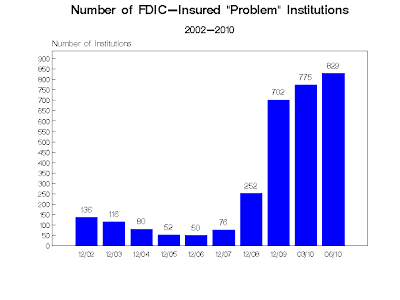The ISM Report is a subjective number obtained by surveying 400 manufacturers asking them to rate the level of business conditions. The ISM Report contains the PMI (Purchasing Managers Index) which has 5 sub indicators.
- Production Level
- New Customer Orders
- Supplier Deliveries
- Inventories
- Employment Level
ISM is an indicator of economic health, an indicator of over 42, over a period of time indicates an expansion in the overall economy. August 2010's number was forecast to come in at 53.2, but the actual number was 56.3. This was a great number and the market responded. Diving into the report, the industries that did the best related to more seasonal activities (Primary Metals, Apparel, Leather & Allied, Transportation Equipment, Fabricated Metal, Electrical Equipment, Appliances & Components, Misc, Computers & Electronic, Paper products, Chemical, Food, Beverage & Tobacco products, Printing and & Related activities. Some of these items relate heavily to the back to school season, others are generally good and could be related to future concerns. Industries reporting contraction were; Furniture & related, Petroleum & Coal, Nonmetallic Mineral, Plastics & rubber and Machinery. Some of these contractions can be related to the consumer saving more than spending on items that are not mandatory to have. Lets break down those numbers and see what is going on.
.png)
If we look at the trend over the past year we see that recent activity has New Orders declining (actually continuing a decline), as well supplier delivers in a slowing direction, Production is up and employment in reported as up (as can be seen in the trend line), as well as inventories are up.
A few things to point out. New Orders are slowing, so why the increase in production, employment and inventories? Prices were reported higher for the 3rd consecutive month (actually was a pretty large jump in August from 57.5% to 61.5%) and 35% of respondents reported having to pay higher prices (53% reported the same prices and 12% reported lower prices). Order backlogs also decreased for a 3rd consecutive month. New Export orders declined for the month of August as Imports of materials by manufactures increased.
Now that data does not exactly spell out a success story. If New orders along with Export orders actually slowed and the backlog (pipeline) is slowing as well (showing a slowing in demand) how does this increase production and employment. The report goes on to say that the annualized PMI of 56.3 percent corresponds to a 4.8 percent increase in real GDP annually, when we just had GDP revised downward. Also, if your imports are rising and your exports are declining, how does this improve GDP as the exact scenario resulted in the recent downward revision of GDP? Another question is that a PMI of great than 42 represents an expanding economy, well we have been over 42 for a year (as shown in the graph above) so where's the party? Last time I looked Unemployment was looking bleaker and bleaker. Try to keep these reports in perspective. It will be interesting to see what the market does today after the big run up.



.png)
.png)
+(7).png)
.png)






